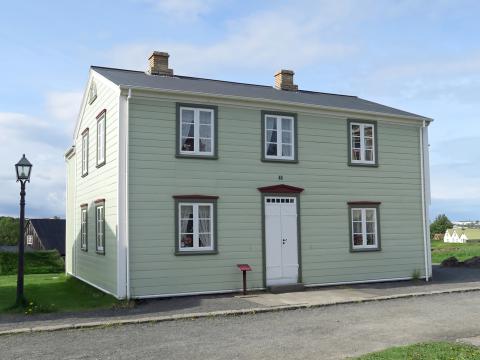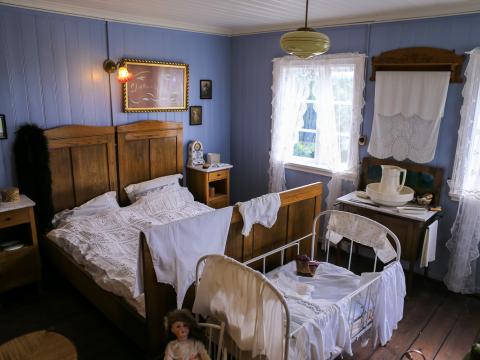
This house, which was once located on Suðurgata 7 in Reykjavík, was built in 1933 by a blacksmith named Teitur Finnbogason. It was the first timber house built in the town by an Icelander and the first house on Suðurgata. Björn Hjaltested, one of Teitur's apprentices, bought the blacksmith's workshop in 1859, followed by the house a few years later. In 1870, he built and attached a larger home, with two floors, on the north side. The roof of the old house was modified and connected to the new building. Efforts were made to make them look as cohesive as possible. In 1883, the older part of the house was raised to match that of the newer build. Suðurgata 7 was relocated to the Árbær Open Air Museum in 1983.


Suðurgata 7 - a Reykjavík home in 1925
The house we call Suðurgata 7 was built in 1833 but was later expanded in stages and got its current look in 1883. The house is an excellent example of wooden homes in the classical style built in Reykjavík in the 19th century. The exhibition in the Suðurgata 7 house shows two different households in 1925. A wealthy family who enjoys all modern conveniences such as electricity, a bathroom and running water live in one part of the house. A widow occupies the other half of the house and rents out rooms: one to a schoolboy from the countryside; and another to a single mother and her son.
Additionally, the widow ekes out her income by sewing. Please note that this is not an exhibition of the actual inhabitants of the house in 1925. The aim is only to give a general picture of people's living habits in Reykjavík at this time.

